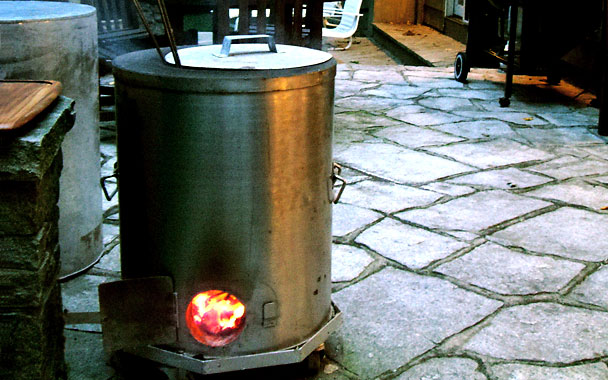My wife’s uncle, Jeff, bought a tandoor a couple years back. Inspired by a trip to India, he had to have one of the weighty clay ovens for his shady backyard in West Hartford, Connecticut. It was a powerful purchase, one that changed the landscape of Jeff’s cooking-psyche, and of our conversations. Whenever we discussed roasting meat, grilling or barbecuing, and anything remotely Indian, Jeff would passionately wax on about how the tandoor’s intense heat transforms marinated meat and vegetables into divine goodness. As the obsession grew he started claiming things like, “I’ve stopped using my grill altogether.” Then it seemed like every conversation turned to the tandoor. The mere mention of lamb (even wool) would instantly swerve Jeff into a speech about kebabs or how to properly thread meat using the giant tandoori skewers, called seekhs. Frankly, I thought he’d never stop talking about it. I related to Jeff, though—I’d fooled around with a tandoor before and was familiar with the cooking technique’s badassness (not to mention its tasty results). Unfortunately, I had come away from the experience with nothing but hairless arms, singed knuckles, and complete respect for the oven’s 800-plus-degree heat.
Recently, my wife and I went to see Jeff’s tandoori skills in full glory; he was making a feast involving rack of lamb and naan. On the patio we walked past a still life of neglect: A smoker, charcoal grill, and gas grill, each coated with pollen and cobwebs. Then we met Jeff’s addiction face to face: A plain steel cylinder on wheels, a couple feet tall and a foot and a half wide, with a ten-inch opening on top revealing thick clay walls.
The oven was already fired up (it takes a little over an hour to get fully heated) and a rich orange glow shimmered in the bottom. Jeff launched right into the specifics: “I use hardwood charcoal for fuel. You can get a propane insert, but I like the charcoal because I think it gives the food a better flavor.” He gave an explanation of how fats from the marinade and meat drip onto the hot coals, creating wisps of smoke that subtly permeate the food.
In the kitchen, Jeff showed us how to skewer the meat, which had been marinated in a puree of onion, garlic, ginger, cumin seed, yogurt, ghee, and Indian chile powder for a few hours. Because the seekhs stand somewhat upright in the tandoor, food can easily slip off the skewers and into the fire below, which makes it very important to properly thread the ingredients so they stay put. “I use the butt end of a lemon to hold the food in place,” Jeff said. “But still, even after doing this hundreds of times, I hold my breath a little bit when moving the skewers in and out of the tandoor. I’ve had my fair share of food slide into the coals.”
Back outside, we placed our skewers in the tandoor. In minutes the oven’s heat shrouded the food, causing it to blister and char. “You manage the oven’s temperature and any flare-ups by controlling the air flow using the lid and the flue at the bottom there,” Jeff explained, pointing to a four-inch door. Meanwhile, the wrought-iron seekhs conduct heat through the middle of the food, an effect that creates rapid, even cooking.
When it was done, the meat came out along with a plume of smoke, hissing as if it had just emerged from the underworld. We set it aside to rest for a few minutes while Jeff demonstrated his naan-making talents. Wearing a heavy-duty asbestos glove to shield his skin against the tandoor’s heat, he pushed his entire arm in to affix flattened disks of dough onto the oven wall.
Dinner was conversation-less. The lamb was something you’d ask for as your last meal, and it deserved the silence. “Cooking with the tandoor is not a science, it’s an art,” Jeff said. My wife and I just kept eating and listened as he tried to sort out what really occurs inside the tandoor. What is it that transforms the food into such greatness? How does the intense, wrap-around heat emitted by the oven’s clay walls do it? All I could think was, it makes sense that this form of cooking has been around for thousands of years. And I realized: If I had my own backyard tandoor, it would be all I talked about.
Resources
Jeff’s tandoor was purchased from Gulati International (he has the residential model, which sells for $695). Also, Tandoor: The Great Indian Barbeque by Ranjit Rai is an amazing resource for anyone wanting to learn about tandoori cooking.



 Pinterest
Pinterest


